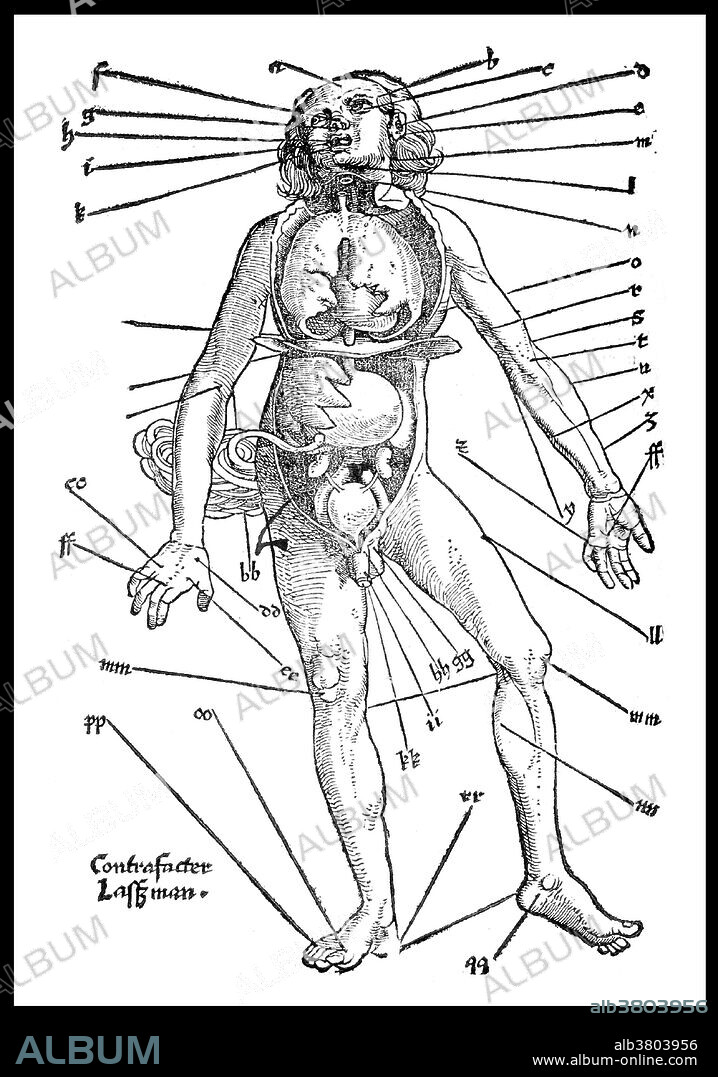alb3803956
Bloodletting, "Feldbuch der Wundartzney", 1528

|
Zu einem anderen Lightbox hinzufügen |
|
Zu einem anderen Lightbox hinzufügen |



Haben Sie bereits ein Konto? Anmelden
Sie haben kein Konto? Registrieren
Dieses Bild kaufen

Titel:
Bloodletting, "Feldbuch der Wundartzney", 1528
Untertitel:
Siehe automatische Übersetzung
Hans von Gersdorff (1455-1529) was a German surgeon. In 1517, he published Feldbuch der Wundartzney (Fieldbook of Surgery). The book, based on the writings of Guy de Chauliac, served as one of the most basic surgical texts in Europe for a number of years. It was well-known for its advice on limb amputation, of which Gersdorff is reputed to have performed at least 200. The book contains woodcut anatomical images, including a bloodletting figure, "Wound Man," a skeleton, and another figure showing internal organs (the viscera-manikin). Virtually nothing is known about the illustrator, Johann Ulrich Wechtlin. The two folded leaves (the skeleton and the viscera-manikin) were originally published by Johann Schott and were inserted into the book's 1517 edition. In later editions, such as this one printed in 1528, the leaves appear to have been standard illustrations.
Bildnachweis:
Album / NLM/Science Source
Freigaben (Releases):
Model: Nein - Eigentum: Nein
Rechtefragen?
Rechtefragen?
Bildgröße:
3157 x 4500 px | 40.6 MB
Druckgröße:
26.7 x 38.1 cm | 10.5 x 15.0 in (300 dpi)
Schlüsselwörter:
16. JAHRHUNDERT • 16. JH. • ADERLASS • ANATOMIE • BERÜHMT • BERÜHMTE PERSÖNLICHKEIT • BLOCK-DRUCK • BLUTUNG • DEUTSCH • DIAGRAMM • EUROPAEER (F M) • EUROPAEER • EUROPÄER (F M) • EUROPÄER • EUROPÄISCH • HOLZARBEIT: SCHNITZEREI • ILLUSTRATION • ILLUSTRATIONS • KARTE • NOTABEL • PROMINENZ • SCHNITZEREI: HOLZ • SCHROEPFEN • SCHRÖPFEN • TECHNIK: HOLZSCHNITT
 Pinterest
Pinterest Twitter
Twitter Facebook
Facebook Link kopieren
Link kopieren Email
Email
